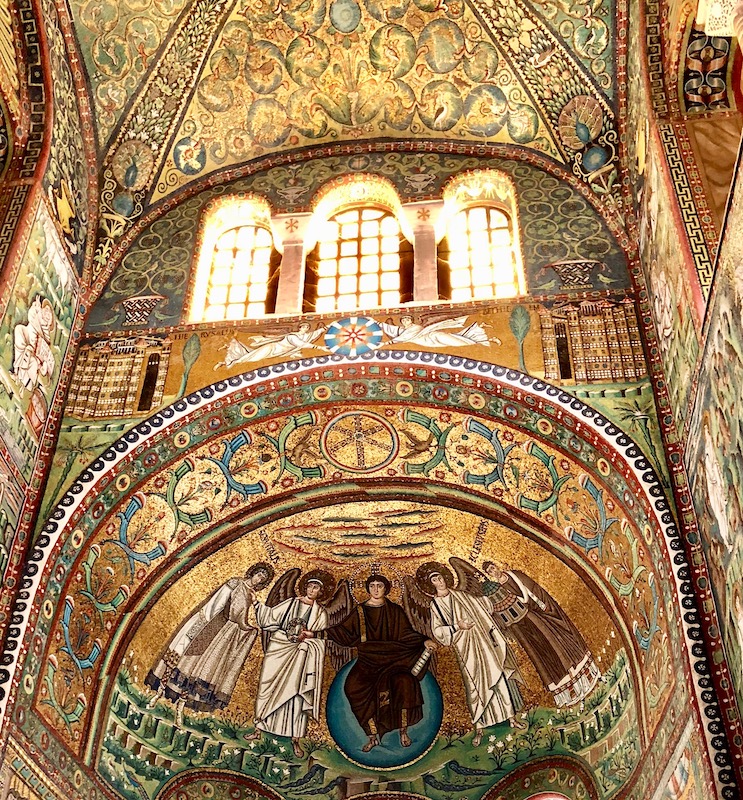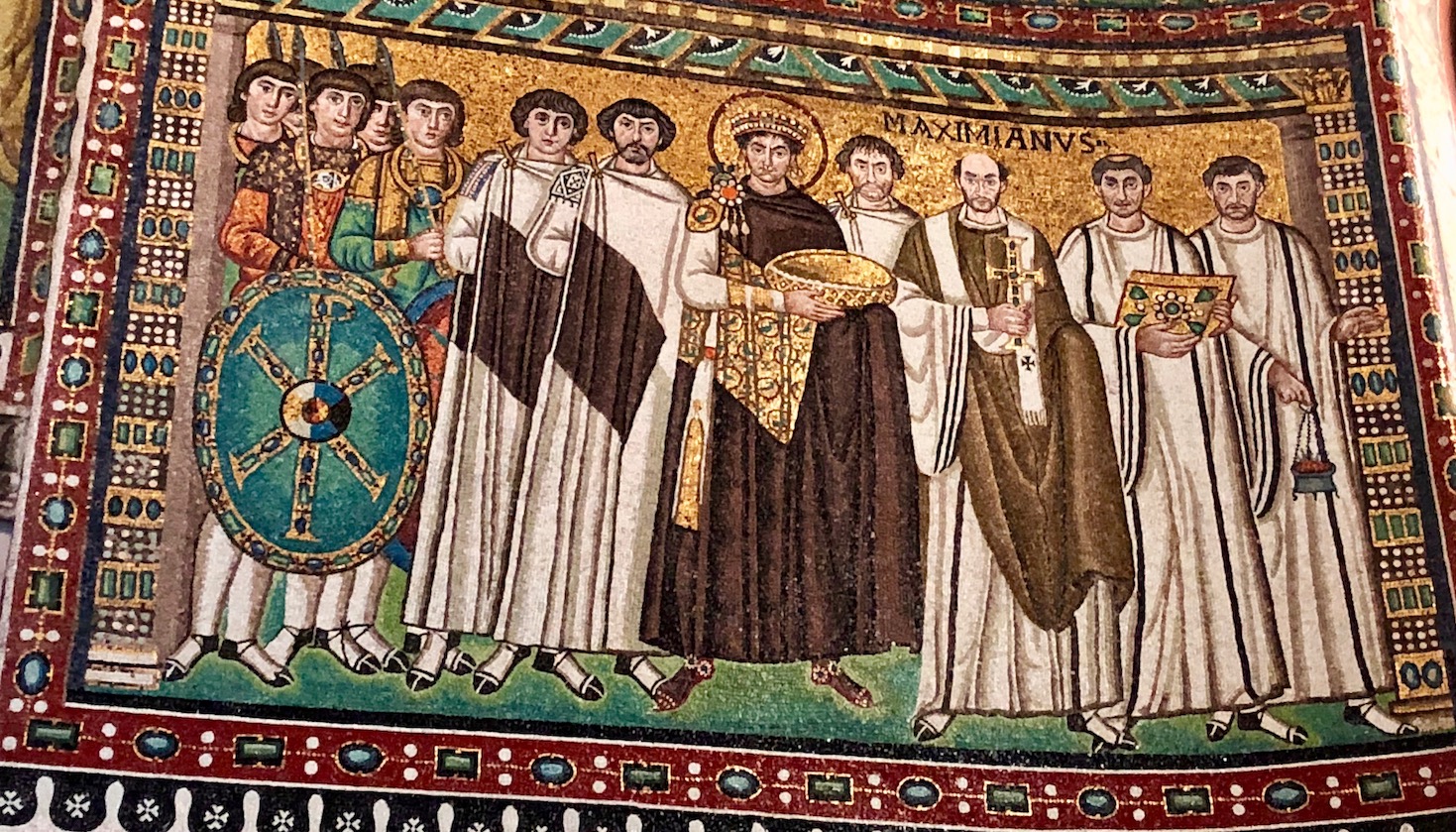09 Apr THE UNEXPECTED RICHES OF RAVENNA
Tucked away on the Adriatic coast, not really on the way to any of the major tourist destinations, is a small city that contains some of the most astonishing and beautiful Roman mosaics anywhere in Italy.
After the Roman Empire was divided into two, Constantine established his eastern capital in Constantinople and Ravenna became the capital of the Western Roman Empire from 402AD until its collapse in 496AD. Ravenna then became the capital of the Christian Ostragoth kingdom until 540, when it was taken over by the Byzantine (Eastern Roman) empire as part of a move to reconquer parts of their original homeland on the Italian peninsula. They held the sliver of land along the coastline from Puglia to Venice. Throughout this period of change, however, Ravenna remained a rich and thriving port city with a constant population that maintained its established Roman culture, trade and crafts.
Ravenna’s famous mosaics were completed over a roughly hundred year period from the mid 400s to mid 500s. This artistic tradition of Roman origins, was maintained and influenced by the latter civilisations that inherited the city and in particular by the Byzantines. UNESCO has listed eight buildings as World Heritage Sites, which for what seems like a small town today, demonstrates the enormous wealth and prestige it had at the time.

The mosaics are unusual in that they are so prolific, largely intact and utterly dazzling with huge amounts of gold and brilliant lapis lazuli blue. Before Christianity, Romans used mosaics as decoration for their houses and villas but the Ravenna mosaics represent a shift to religious imagery, and in the style of public art. Significantly, because of the time it takes to create mosaics of this scale and detail, they must have been completed during a period of peace and stability.
The most famous of the churches is the Basilica of San Vitale, which inspired Charlemagne who visited Ravenna three times and used the basilica as his model when he built the Palatine chapel in Aachen in Germany. The central apse towers over the rest of the church so that the visitor gazes upwards to see the intricate golden mosaics that line the cupola.
However, the oldest and possibly the most beautiful of the buildings is the mausoleum of Galla Placidia, the tomb of the daughter of the Roman Emperor Theodosius I. This small rounded building is set in the grounds of San Vitale and the entire barrel vaulted ceiling is decorated with gorgeous brilliantly coloured mosaics. Looking up the visitor sees hundreds of dazzling golden stars in a midnight blue sky. At the end of the vault the lunette features an image of a beardless Christ, very different from the normal iconography which portrays Christ with a beard.
All of the buildings containing these unique mosaics are collected around the centre of Ravenna and it’s easy to visit the sites in a day or two.
We stay in Ravenna and visit the mosaics as part of our new Unexpected Riches – Discovering Emilia Romagna tour, which runs from the 16 – 27 September 2019 and there are still a couple of places available!

